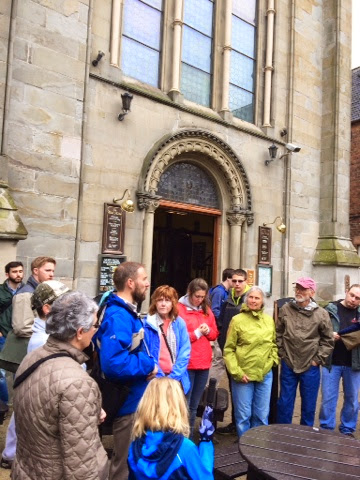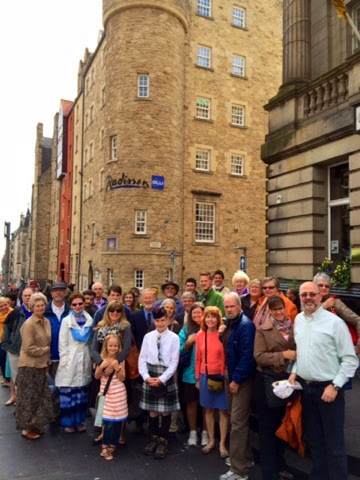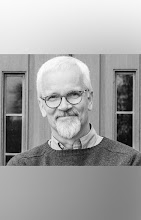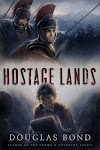Glasgow Kirk (used to be cathedral) on our very first day together
Fenwick Kirk, 1643, William Guthrie Covenanter first pastor here, Second Reformation in generation after Knox
St John the Baptist Kirk tower, Ayr, where Knox's son-in-law John Welsh ministered and where his daughter Elizabeth is buried. Gavin Beers shared with us so ably here
Westkirk disruption church, built 1845. With the growing apostacy in the Church of Scotland, Thomas Chalmers led the founding of the Free Church in 1843. Westkirk sadly is now a pub where we ate lunch
Aston Hotel Dumfries, Knox installed young pastors in Dumfries
Hadrian's Wall, AD 122-128 (yes, Giles and I did manage to finish all 84 miles of the route, a great time together, especially with our support crew making it happen)
Durham Cathedral (Church of England) where Knox was called to answer charges by the bishop in 1550; where Bede, Cuthbert, and Oswald are buried. Modern error corrupting the gospel is marked here as NT Wright was bishop of Durham for a time
Lindisfarne Priory (Hand of Vengeance, 8th century Anglo-Saxon yarn of mine) center of Celtic Christianity 6th c and beyond
Norham Castle where Knox ministered as chaplain to the garrison while pastoring at nearby Berwick-upon-Tweed and where one of his first converts, Marjory Bowes, was brought to living faith in Christ (and would become his future wife)
St Mary's Collegial Church across the river from where he was born in Haddington, where Knox was likely baptized, where he was ordained, and where he later preached, installed a pastor and suggested they wall off the un needed portion of the large parish church building.
St Giles High Kirk Edinburgh where Knox preached, Grassmarket Covenanter monument, Knox House Museum, The Netherbow Tolbooth Prison now pub where we ate lunch, Magdalen Chapel where went to church, Edinburgh Castle and Grassmarket, our hotel on the Royal Mile:
St Andrews sites: Where Patrick Hamilton was martyrd, where Rutherford taught and died, St Andrews Cathedral ruins, St Andrews Castle where Knox was taken prisoner by French
 |
| Leuchars where Alexander Henderson preached |
 |
| St Peter's Dundee at M'Cheyne's grave with living pastor David Robertson |
 |
| St John's Kirk, Perth where Knox preached and iconoclasm commenced |
 |
| Loch Leven Castle where Mary Queen of Scots was held after she was forced to abdicate |
 |
| Church of the Holy Rude, Stirling; Knox crowned James VI here and preached; James Guthrie pastored here |
 |
| Stirling Castle where Mary Queen Regent orchestrated persecution of Knox and Reformation |
 |
| Bannochburn (1314-2014) Robert the Bruce crushes English army of Edward II |
 |
| Dunblane Cathedral (Knox ordained by Bishop of Dunblane) |
 |
| Sir Richard, Knight of Nottingham |



































































